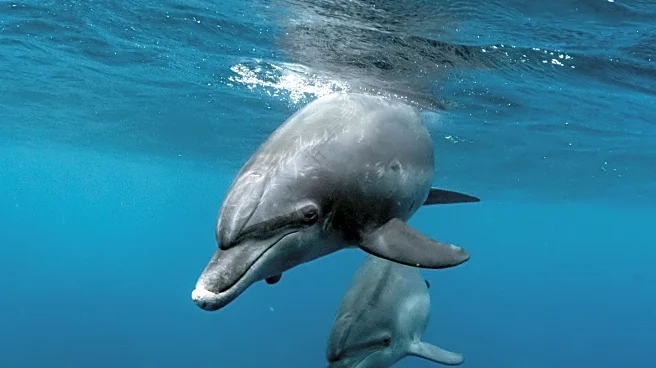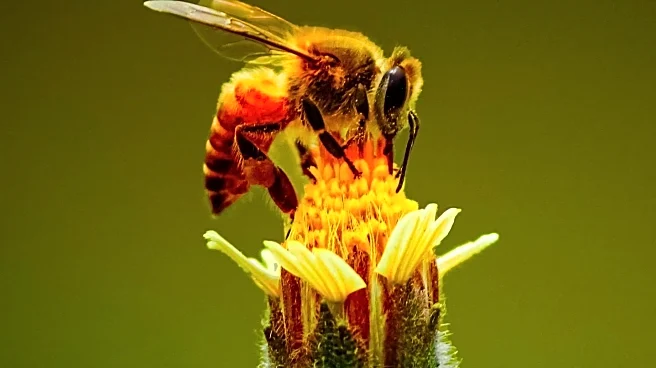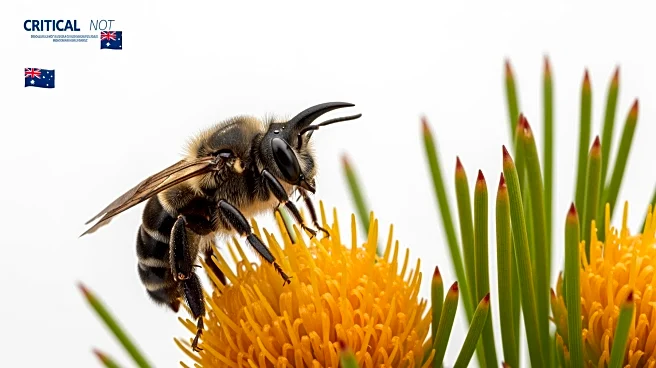What's Happening?
Curtin University's Dr. Kit Prendergast has discovered a new bee species named Megachile lucifer in Western Australia's Goldfields region. The species is notable for the female bees' devil-like horns, measuring approximately 0.9 millimeters. This discovery,
made near a critically endangered wildflower, underscores the importance of protecting native bee species and their habitats from threats such as mining and climate change. The discovery is significant as it is the first new member of this bee group described in over 20 years, highlighting the vast biodiversity yet to be explored in areas at risk of environmental disturbance.
Why It's Important?
The discovery of Megachile lucifer emphasizes the need for conservation efforts to protect native bee species and their ecosystems. Bees play a crucial role in pollination, supporting biodiversity and food production. The presence of this new species in a region threatened by mining and climate change highlights the urgency of environmental protection measures. Without proper understanding and conservation of native bees, there is a risk of losing species that are vital to maintaining ecological balance and supporting endangered plants.
What's Next?
The discovery calls for increased efforts to survey and protect native bee species, particularly in areas facing environmental threats. Conservationists may push for stricter regulations on mining activities to prevent habitat destruction. Additionally, further research into the ecological roles of Megachile lucifer and other native bees could inform conservation strategies and help mitigate the impacts of climate change on these species.
Beyond the Headlines
The discovery of Megachile lucifer raises ethical questions about the balance between economic development and environmental conservation. As mining companies expand operations, the potential loss of undiscovered species poses a significant threat to biodiversity. This situation highlights the need for sustainable practices that prioritize ecological preservation alongside economic growth.













